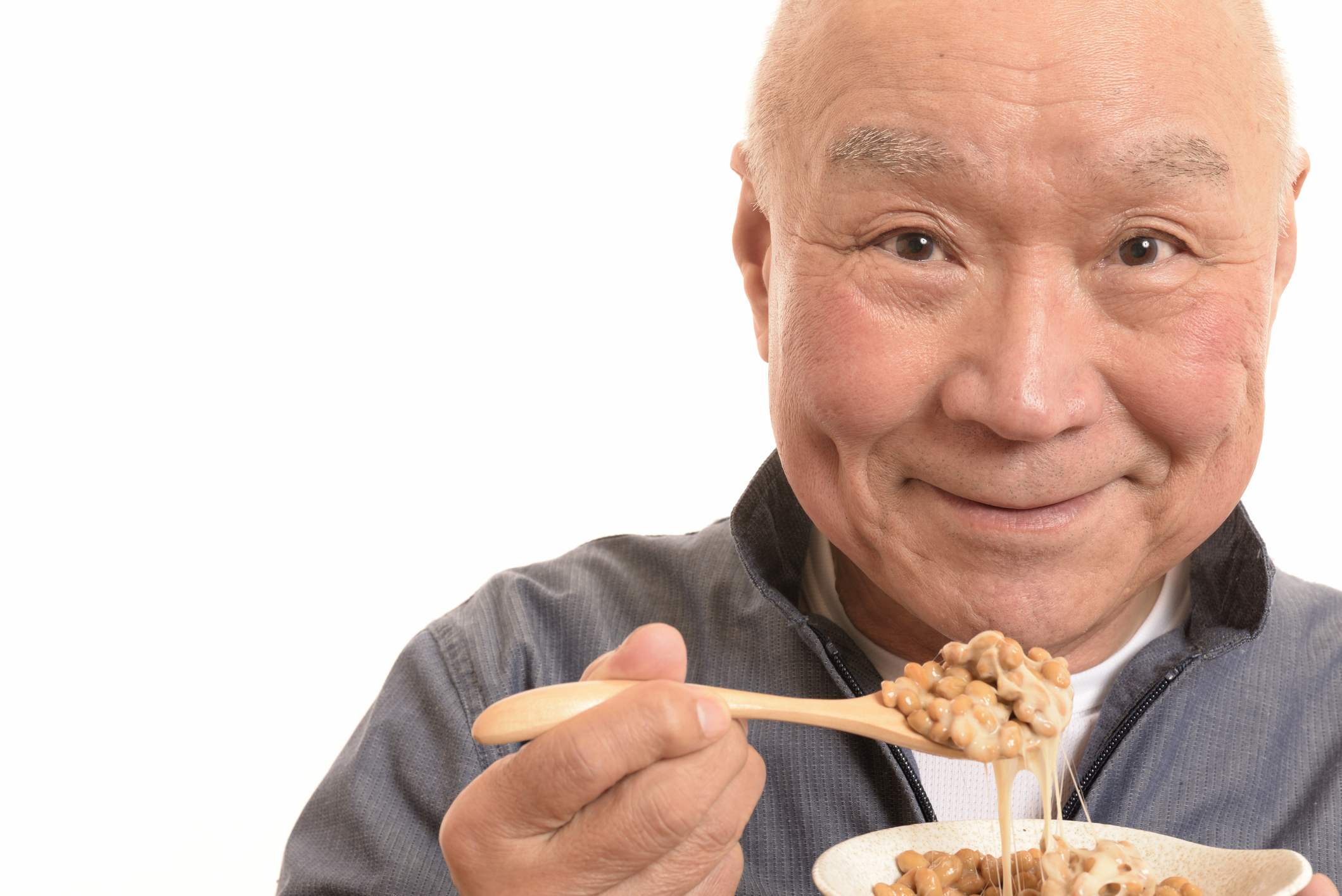Get Easy Health Digest™ in your inbox and don’t miss a thing when you subscribe today. Plus, get the free bonus report, Mother Nature’s Tips, Tricks and Remedies for Cholesterol, Blood Pressure & Blood Sugar as my way of saying welcome to the community!
Clot-dissolving Japanese food has potential as COVID treatment

An ancient Japanese food, revered for millennia for its health properties, is the latest target of researchers looking to gain an edge over COVID-19.
Natto, a traditional dish made from fermented soybeans, is believed to be one of the reasons that the Japanese population is a healthy and long-lived one. Remember, this island country is home to more than a quarter of the world’s population over the age of 65 — and boasts the longest life expectancy on Earth.
Legend has it that the samurai credited natto as one of the foods that gave them exceptional endurance and high energy levels. But what has modern science found to be true about this cheesy-textured, smelly, sticky food?
For starters, those who eat it regularly are less likely to suffer from stroke or cardiac disease — and that’s believed to be because of its effect on blood clots…
While trying to find a way to naturally dissolve clots and improve circulation, Dr. Hiroyuki Sumi discovered that the fermented food contained a protein-based enzyme — which he named “Nattokinase”— that easily dissolved fibrin, the mesh-like material the body produces to clot blood.
But the latest research shows it may inhibit the ability of SARS-CoV-2 to infect cells and cause COVID-19.
Fermented soy goes head-to-head against viruses
According to paper author Tetsuya Mizutani, director of the Center for Infectious Disease Epidemiology and Prevention Research at the Tokyo University of Agriculture and Technology, “Traditionally, Japanese people have assumed that natto is beneficial for their health. In recent years, research studies have revealed scientific evidence for this belief. In this study, we investigated natto’s antiviral effects on SARS-CoV-2, the virus that causes COVID-19, and bovine herpesvirus 1 (BHV-1), which causes respiratory disease in cattle.”
Natto is made by fermenting soybeans with Bacillus subtilis, a bacteria found in the human gut and soil. The researchers prepared two natto extracts from the food, one with heat and one without. They applied the extracts to sets of lab-cultured cells from cattle and humans. One set was infected with SARS-CoV-2, while the other set was infected with BHV-1.
Both SARS-CoV-2 and BHV-1 lost the ability to infect cells when treated with the unheated natto extract. Neither virus appeared to be affected by the heat-treated natto extract. And they have a theory as to why…
“We found what appears to be a protease or proteases — proteins that metabolize other proteins — in the natto extract directly digests the receptor-binding domain on the spike protein in SARS-CoV-2,” Mizutani said, noting that the protease appears to break down in heat, losing the ability to digest proteins and letting the virus remain infectious.
But how would it stand up against mutations of SARS-CoV-2?
“We also confirmed that the natto extract has the same digestive effects on the receptor-binding domain proteins of the SARS-CoV-2 mutated strains, such as the Alpha variant,” Mizutani said.
Natto’s ancient benefits for modern-day health woes
It’s always exciting when research can prove the health benefits of food — especially one like natto with such a long history associated with health properties.
But it’s even more exciting when these benefits can jump straight from our past to help us face modern health problems.
Though this initial research was quite promising, Mizutani stressed that more research is needed and that this work done in the laboratory is not evidence that eating natto could reduce viral infection.
The good news though, is that it has the potential to be one more effective tool against COVID-19.
“Although there are vaccines for COVID-19, we do not know how effective they may be against every variant,” Mizutani said. “It will also take time to vaccinate everyone, and there are still reports of breakthrough cases, so we need to make treatments for those who develop COVID-19. This work may offer a big hint for such pharmaceutical design.”
If you decide to try natto for its other legendary (and substantiated) health benefits, seek out a traditional Japanese restaurant. Be prepared for its pungent smell — which has been described by some as like old cheese or socks. It’s said to be best eaten with hot rice, drizzled with soy sauce and sprinkled with freshly chopped green onions.
And believe me, acquiring the taste is well worth it…
Natto is the most concentrated food source of vitamin K2, the vitamin that helps direct calcium to where it’s needed (bones, teeth) instead of allowing it to collect in dangerous places, like arteries, where it can contribute to clots. Along with the nattokinase enzyme, that makes for a powerful circulation pairing.
Editor’s note: There are perfectly safe and natural ways to decrease your risk of blood clots including the 25-cent vitamin, the nutrient that acts as a natural blood thinner and the powerful herb that helps clear plaque. To discover these and other secrets of long-lived hearts, click here for Hushed Up Natural Heart Cures and Common Misconceptions of Popular Heart Treatments!
Source:
Traditional Japanese food may hold building blocks of COVID-19 treatments — EurekAlert












